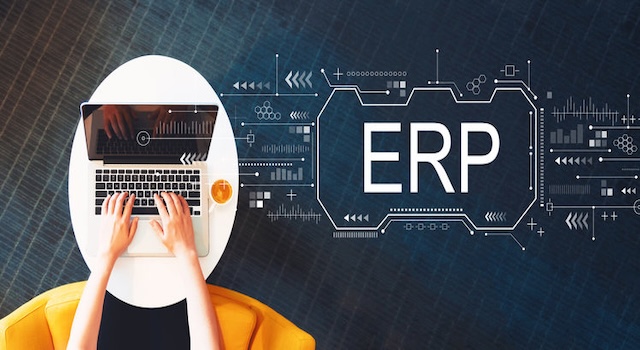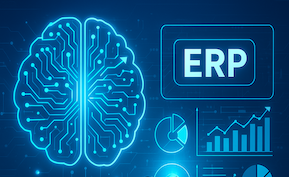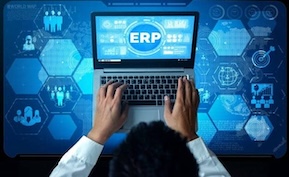Artificial Intelligence
ERP
ERP Cybersecurity in the Age of AI: Protecting Intelligent Enterprise Systems

ERP cybersecurity has always been mission-critical—but the rise of AI-powered ERP systems introduces a new wave of security challenges. As enterprises embed AI-driven automation, predictive analytics, and self-learning workflows into ERP platforms, they must also evolve their security models to protect against more sophisticated threats.
The changing ERP threat landscape
Traditional ERP systems were centralized, on-premise, and tightly controlled. Today’s ERP environments are cloud-based, integrated, and AI-enhanced—spanning multiple networks, APIs, and user endpoints. This expansion increases the attack surface, especially when AI models process sensitive business data or make autonomous decisions.
Top cybersecurity risks in AI-enabled ERP systems
- Data poisoning: Attackers manipulate training data or input streams to corrupt AI predictions and outputs.
- Prompt injection and model hijacking: Malicious inputs can cause ERP-integrated AI to leak data or perform unauthorized actions.
- API exploitation: As ERP systems connect to third-party AI tools, unsecured APIs become vulnerable entry points.
- Insider threats: AI automation can amplify the impact of credential misuse or configuration errors.
- Supply chain vulnerabilities: ERP vendors, plugins, and cloud services all represent potential attack vectors.
AI-driven defense: Cybersecurity meets machine learning
Ironically, the same AI that introduces risk can also strengthen defense. AI-based cybersecurity tools are now essential in modern ERP ecosystems.
- Behavioral analytics: ML models detect deviations in user or process behavior (e.g., abnormal login times or transactions).
- Threat intelligence automation: AI systems analyze real-time security feeds to predict and prevent attacks.
- Adaptive authentication: Risk-based multi-factor authentication (MFA) adjusts based on user context and anomalies.
- Automated incident response: AI orchestrates threat containment—isolating affected modules or users instantly.
Best practices for ERP cybersecurity in the AI era
- Adopt zero-trust architecture (ZTA): Never assume trust—verify every identity, device, and API request.
- Implement continuous monitoring: Use SIEM and SOAR platforms integrated with ERP logs and AI alerts.
- Encrypt data end-to-end: Apply AES-256 encryption for data in motion and at rest, including AI training datasets.
- Regularly retrain AI models: Use clean, verified data sources to prevent bias or drift-induced vulnerabilities.
- Segment AI environments: Isolate ERP AI models from production networks to reduce breach impact.
Governance and compliance
With regulations like GDPR, SOC 2, and ISO 27001 emphasizing data protection and auditability, ERP security teams must align governance policies with AI ethics and transparency principles.
- Model explainability: Maintain records of how ERP AI systems make decisions affecting finance, HR, or supply chain.
- Data lineage: Track all transformations and sources for AI training datasets within ERP analytics modules.
- Access control mapping: Apply least-privilege principles to both users and AI service accounts.
- Third-party compliance: Verify vendor adherence to shared security frameworks (e.g., ISO 27017 for cloud security).
Tools and technologies enhancing ERP cybersecurity
- Cloud-native security services: Azure Defender, AWS GuardDuty, and Google Security Command Center for ERP cloud layers.
- SIEM solutions: Splunk, IBM QRadar, or Sentinel for threat detection and correlation.
- AI model firewalls: Tools like HiddenLayer or ProtectAI safeguard machine learning components from adversarial attacks.
- Data loss prevention (DLP): Integrated with ERP document management and messaging systems.
Metrics to track cybersecurity maturity
- Mean time to detect (MTTD): Speed of identifying potential threats or anomalies.
- Mean time to respond (MTTR): Duration from detection to containment.
- Patch latency: Average time to apply critical updates to ERP components.
- Audit readiness: Compliance score across governance frameworks.
- Incident recurrence rate: Frequency of similar security issues over time.
SEO-friendly FAQs
Why is AI changing ERP cybersecurity? AI expands ERP functionality but also introduces new attack surfaces through predictive analytics, data ingestion, and automation tools.
How can AI enhance ERP security? AI can monitor behavior, detect anomalies, and automate responses faster than manual methods.
What is zero-trust ERP security? A framework where no user or system is automatically trusted; every interaction is authenticated and continuously verified.
Can ERP systems be hacked through AI? Yes—if AI models, APIs, or data inputs aren’t secured, attackers can manipulate outputs or extract sensitive information.
Bottom line
As ERP systems evolve into intelligent platforms, cybersecurity must evolve with them. By pairing zero-trust principles with AI-powered defense, enterprises can protect mission-critical data and ensure their ERP remains both intelligent and secure.






